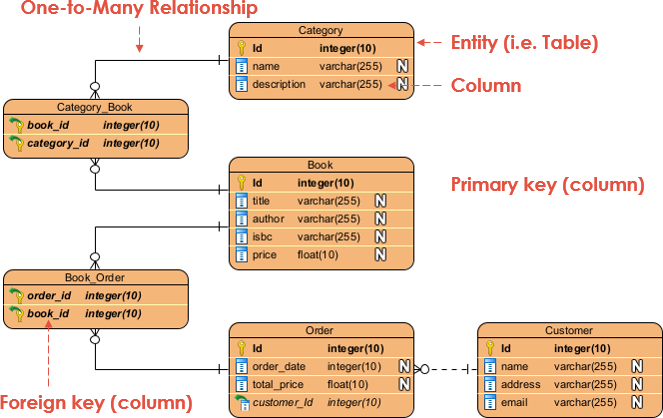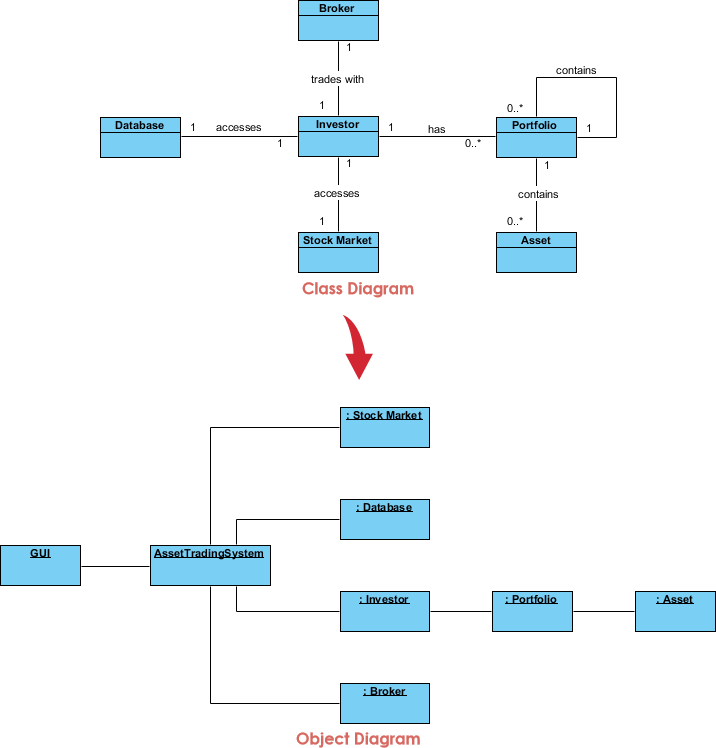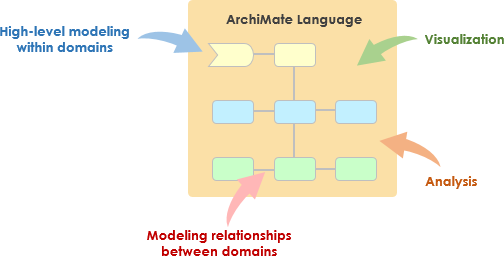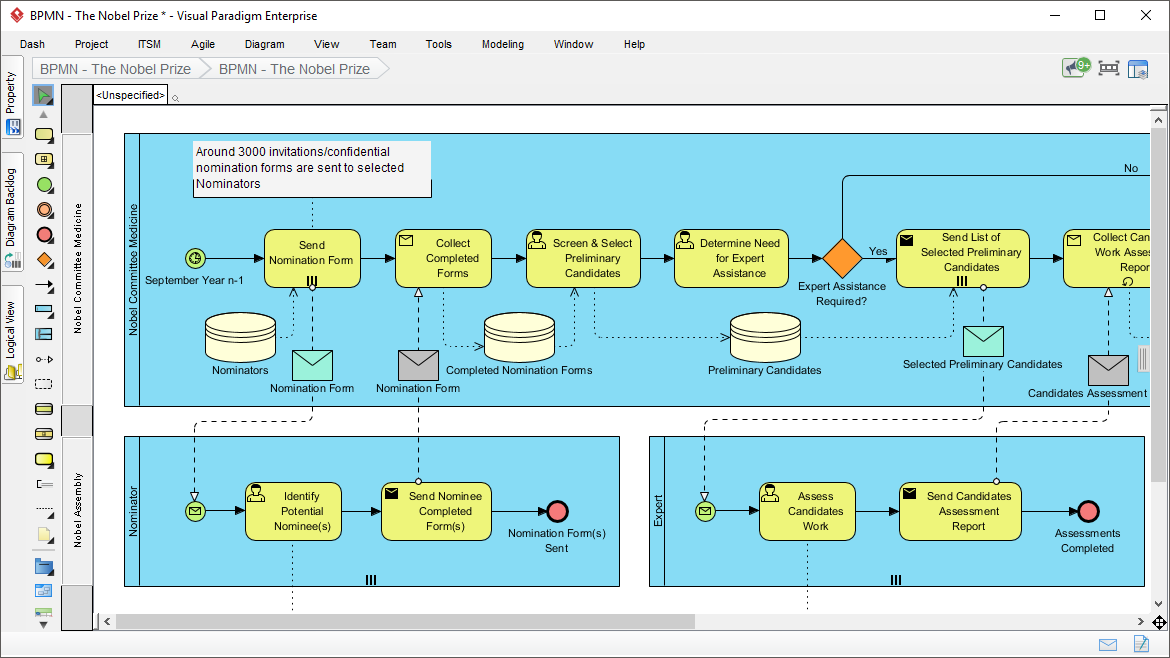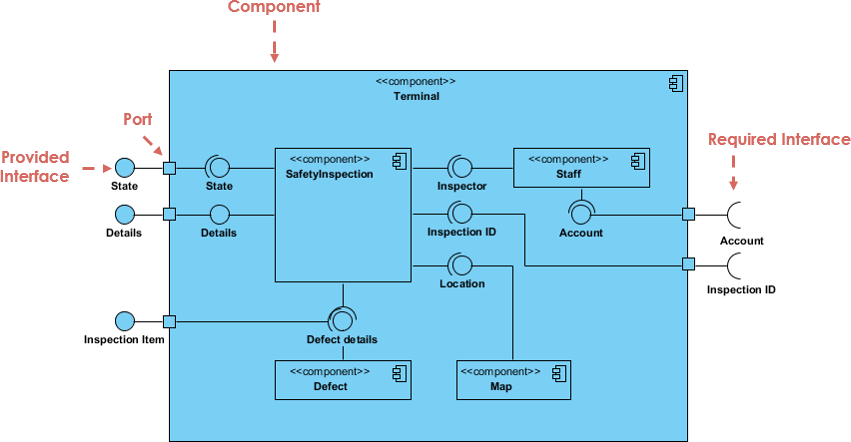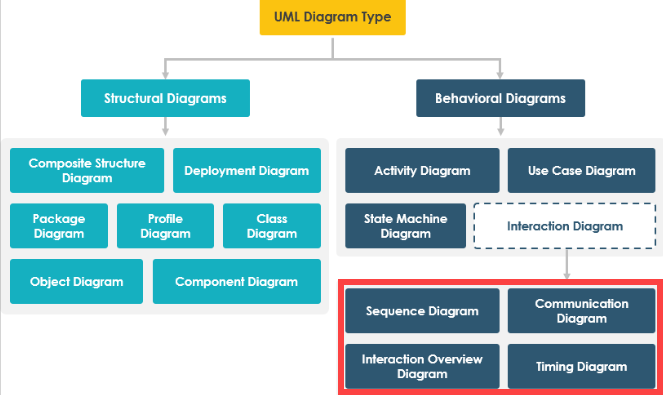Home » Visual Modeling » Page 2
In the dynamic world of business, staying ahead of the curve is crucial to success. To thrive in today's competitive landscape, you need more than just a good product or service—you need efficient and streamlined processes. That's where our comprehensive suite of Business Analysis & Design tools comes into play. These tools are your key to improving efficiency, boosting productivity, and achieving your strategic goals. Strategic Planning: Define Your Path to Success Every successful business begins with a clear vision and well-defined strategic goals. Our Strategic Planning tool provides you with the framework…
continue reading →
Introduction In today's fast-paced business environment, effective communication is crucial for success. Visual models have become indispensable tools for conveying complex ideas, processes, and systems efficiently. Visual Paradigm is a powerful software solution that takes visual modeling to a whole new level. Whether you're a seasoned architect, a business analyst, or a developer, Visual Paradigm's robust features and user-friendly interface empower you to create and manage diagrams and model elements with ease. The Power of Visual Modeling Visual modeling is the art of representing complex systems, processes, and ideas through diagrams and visuals.…
continue reading →
1. Introduction to ERD An Entity-Relationship Diagram (ERD) serves as a powerful visual tool for comprehensively mapping the structure of a database. It provides a graphical depiction of how different entities within the database are related to one another, while also highlighting the attributes associated with each entity. ERDs are invaluable during the database design phase as they facilitate the process of defining data requirements and establishing a clear understanding of the database's architecture. Moreover, they excel at conveying intricate data relationships, making them an indispensable communication aid for both technical and non-technical…
continue reading →
Introduction Unified Modeling Language (UML) provides a powerful framework for visualizing and designing software systems. Among the various types of UML diagrams, class diagrams and object diagrams play essential roles in modeling different aspects of a software system. In this article, we will explore the distinctions between these two diagram types, when to use each, and how they contribute to the overall understanding of a software system's structure and behavior. Whether you are a software developer, architect, or simply interested in software design, this guide will help you grasp the nuances of class…
continue reading →
Introduction ArchiMate is an enterprise architecture modeling language that serves the purpose of describing, analyzing, and visualizing architecture within and across business domains in a clear and unambiguous manner. It is an open and independent standard, governed by The Open Group, and it has gained wide acceptance in the field of enterprise architecture. Key Points about ArchiMate: Scope and Focus: ArchiMate distinguishes itself from other modeling languages, such as UML and BPMN, by its specific focus on enterprise architecture. While UML and BPMN have broader applications, ArchiMate is designed to model the architecture…
continue reading →
Introduction In the dynamic world of business, where efficiency and clarity are paramount, there's a tool that stands out as a beacon of innovation and simplicity—Visual Paradigm. This introduction is your first step into a realm of business process management that will empower you to visualize, refine, and optimize your workflows like never before. Visual Paradigm isn't just a tool; it's a game-changer. With its Business Process Model and Notation (BPMN) prowess, it brings a new level of understanding to complex workflows. Whether you're a seasoned business analyst or a stakeholder eager to…
continue reading →
UML (Unified Modeling Language) component diagrams are indeed a valuable tool in software engineering for modeling high-level software components and subsystems. They are especially useful in service-oriented architectures and component-based development projects. Here are some key points about UML component diagrams: Modeling Components: UML component diagrams allow you to represent the major software components or modules within a system. These components can be classes, libraries, packages, or even larger subsystems, depending on the granularity of the system you are modeling. Defining Interfaces: One of the primary purposes of component diagrams is to define…
continue reading →
Introduction In the realm of software development, effective communication and collaboration are paramount. Developers, designers, and stakeholders must work together seamlessly to create robust and efficient software systems. One of the most powerful tools for visualizing and documenting these interactions is the sequence diagram. In this article, we will delve into the world of sequence diagrams, exploring their purpose, components, and best practices for creating them. What is a Sequence Diagram? A sequence diagram is a graphical representation of the interactions between various objects or components within a software system over a specific…
continue reading →
Introduction In UML (Unified Modeling Language), interaction diagrams are a category of diagrams used to visualize and describe the dynamic aspects of a system or software application. These diagrams focus on illustrating how different objects or components within the system interact with each other over time. Interaction diagrams are particularly useful for modeling and understanding the flow of messages, actions, and events that occur during the execution of a use case or scenario. Interaction diagrams are essential tools in UML for capturing and communicating the dynamic behavior of a system. They help software…
continue reading →
Introduction In the realm of software engineering and system modeling, the Unified Modeling Language (UML) serves as a vital tool for visualizing, designing, and documenting complex systems. UML offers various diagram types to address different aspects of a system's structure and behavior. Among these, Interaction Overview Diagrams, Interaction Diagrams (Sequence and Communication Diagrams), and Activity Diagrams hold significant prominence. Each of these diagram types serves a distinct purpose and provides unique insights into system dynamics. In this comparative analysis, we will explore and contrast these UML diagrams, shedding light on their intended use,…
continue reading →


